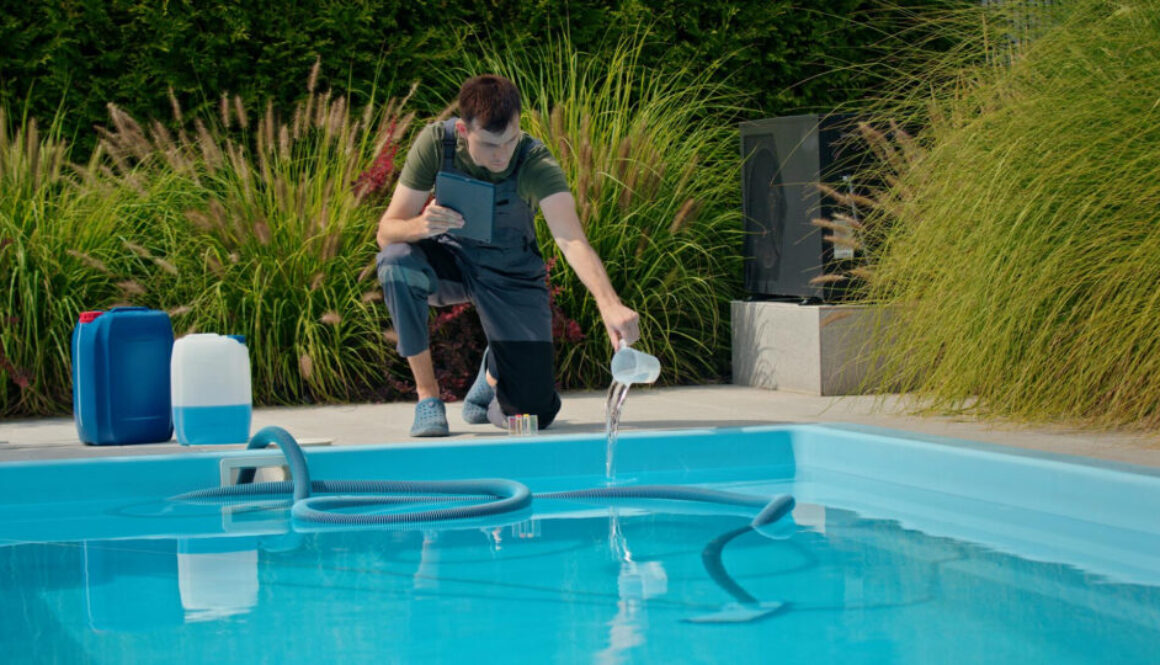Avoiding A Green Pool In The Summer
How to Avoid a Green Pool This Summer: A Technical Guide to Proper Pool Maintenance
As temperatures rise and summer kicks in, your backyard pool should be a refreshing oasis—not a murky, algae-infested swamp. One of the most common warm-weather issues pool owners face is the dreaded “green pool,” typically caused by algae blooms. Fortunately, with a proactive and technical approach to pool chemistry and maintenance, you can keep your water crystal clear all season long.
1. Maintain Proper Chlorine Levels
Why it matters: Chlorine is your primary sanitizer. It kills bacteria, viruses, and most importantly—algae spores. During summer, sunlight (UV rays) and higher swimmer loads can deplete chlorine quickly.
-
Target free chlorine (FC): 2.0 – 4.0 ppm (parts per million) for most pools; up to 5.0 ppm for high use or hot climates.
-
Use stabilized chlorine (e.g., dichlor or trichlor) or add cyanuric acid (CYA) to protect chlorine from UV degradation.
-
Ideal CYA level: 30–50 ppm for chlorine pools. For saltwater pools, aim for 60–80 ppm.
-
Chlorine/CYA ratio: Maintain a free chlorine level that is at least 7.5% of your CYA level to ensure adequate sanitizing power.
2. Test and Balance Your Water Weekly
Pool chemistry is a delicate balance. If any parameter drifts too far from the ideal range, it can reduce chlorine’s effectiveness and open the door to algae growth.
-
pH: 7.2 – 7.6
High pH reduces chlorine efficacy. -
Total Alkalinity (TA): 80 – 120 ppm
Stabilizes pH and prevents rapid swings. -
Calcium Hardness: 200 – 400 ppm
Important for plaster pools—prevents etching and scaling. -
Phosphates & Nitrates: Keep as low as possible
These are algae nutrients—test monthly and remove if necessary with phosphate removers.
3. Brush and Circulate Water Regularly
Algae begins as microscopic spores that settle on pool surfaces, especially in “dead zones” with poor circulation.
-
Brush walls and steps 1–2 times per week with a nylon-bristle brush (or stainless steel for concrete pools).
-
Run pump daily—ideally 1 hour per 10°F of air temperature. For example, 90°F = 9 hours of runtime.
-
Check for circulation dead spots: Behind ladders, in corners, around steps. Adjust return jets to create a circular flow pattern.
4. Shock Weekly or After Heavy Use
“Shocking” the pool (aka superchlorination) oxidizes organic contaminants and kills resistant algae spores.
-
Use calcium hypochlorite or liquid chlorine (sodium hypochlorite).
-
Target shock level: 10x the combined chlorine (CC) reading, or 10 ppm if unknown.
-
Do it at night: Sunlight breaks down high chlorine levels rapidly.
-
Leave the pump running for at least 8 hours afterward to circulate the shock treatment.
5. Monitor Filter Performance
A dirty or undersized filter can’t remove debris and algae effectively.
-
Backwash sand or DE filters when pressure rises 8–10 psi above clean start level.
-
Clean cartridge filters when pressure rises 10 psi or per manufacturer’s recommendation.
-
Filter media should be inspected or replaced annually—especially before peak swim season.
6. Algaecide as a Preventative (Optional)
While not a substitute for proper chlorine levels, some pool owners use a polyquat 60 algaecide as an additional defense.
-
Avoid copper-based algaecides unless you’re experienced, as they can stain surfaces and cause green hair in high concentrations.
-
Dosage: Follow the product label carefully, and avoid mixing different algaecides.
7. Check Pool Equipment Weekly
Faulty or inefficient equipment contributes to algae problems.
-
Inspect pump baskets, skimmer baskets, and impellers for clogs.
-
Check for leaks that may introduce untreated water or reduce suction.
-
Ensure timers and automation systems are set for adequate runtime and chemical feeders are working properly.
Final Thoughts
Preventing a green pool isn’t about using more chemicals—it’s about using them smartly and consistently. Regular testing, balancing, circulation, and sanitation are your primary defenses. Once a pool turns green, recovery can be time-consuming and costly—so invest in prevention, not correction.
See more guides for keeping your pool clean:




